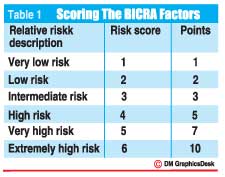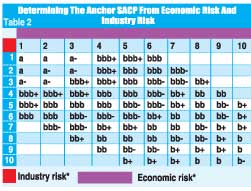Reply To:
Name - Reply Comment
Last Updated : 2024-04-26 02:12:00
 The strengths and weaknesses of an economy and its banking industry are critical factors that underpin the creditworthiness of a country’s financial institutions. Under our criteria, we distill this analysis into a single measure called BICRA. The BICRA framework is designed to evaluate and compare global banking systems on a relative scale. It is not an absolute measure of evaluation of any banking system.
The strengths and weaknesses of an economy and its banking industry are critical factors that underpin the creditworthiness of a country’s financial institutions. Under our criteria, we distill this analysis into a single measure called BICRA. The BICRA framework is designed to evaluate and compare global banking systems on a relative scale. It is not an absolute measure of evaluation of any banking system. Additionally, the Sri Lankan government is “supportive” of the banking industry and is committed to maintaining financial system stability and market confidence. (For more details, see ‘Sri Lanka Banking System Assigned Group ‘8’ Banking Industry Country Risk Assessment’, published June 19, 2012, on RatingsDirect on the Global Credit Portal).
Additionally, the Sri Lankan government is “supportive” of the banking industry and is committed to maintaining financial system stability and market confidence. (For more details, see ‘Sri Lanka Banking System Assigned Group ‘8’ Banking Industry Country Risk Assessment’, published June 19, 2012, on RatingsDirect on the Global Credit Portal). The relevant peers to compare Sri Lanka’s banking system with are banking systems in emerging markets. Within Asia, Sri Lanka’s peers are Indonesia, Philippines, Cambodia and Mongolia. Indonesia and Philippines are in group ‘7’, Sri Lanka is in group ‘8’, Cambodia and Mongolia are in group ‘9’, and Vietnam is group ‘10’ (see chart 1).
The relevant peers to compare Sri Lanka’s banking system with are banking systems in emerging markets. Within Asia, Sri Lanka’s peers are Indonesia, Philippines, Cambodia and Mongolia. Indonesia and Philippines are in group ‘7’, Sri Lanka is in group ‘8’, Cambodia and Mongolia are in group ‘9’, and Vietnam is group ‘10’ (see chart 1).
Add comment
Comments will be edited (grammar, spelling and slang) and authorized at the discretion of Daily Mirror online. The website also has the right not to publish selected comments.
Reply To:
Name - Reply Comment
US authorities are currently reviewing the manifest of every cargo aboard MV
On March 26, a couple arriving from Thailand was arrested with 88 live animal
According to villagers from Naula-Moragolla out of 105 families 80 can afford
Is the situation in Sri Lanka so grim that locals harbour hope that they coul